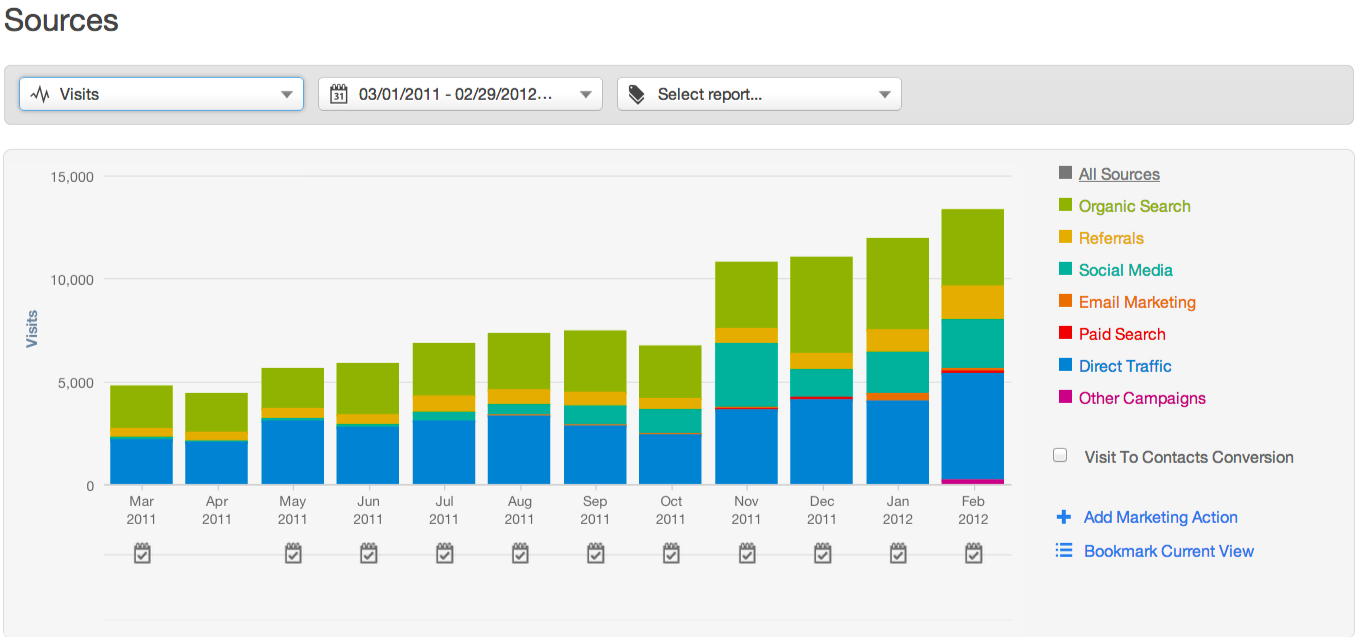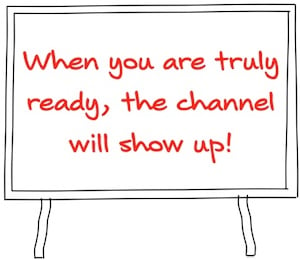Inbound Marketing is the future of marketing and the marketing and PR industry is rapidly transitioning from the old World of outbound interrupt marketing to inbound or permission marketing as it is also known.
Inbound marketing works and has been proved in thousands of instances to lower the cost of marketing and to create a content legacy that keeps on generating mind-share, traffic and leads for both very small and very large companies.
We can now assign rules for the execution of a new inbound marketing project to ensure the likelihood of a positive outcome and rapid return on the investment.
The purpose of this article is to highlight the effort required to be successful with Inbound Marketing, not to lay out the rules for inbound marketing success, that is another article.
I have excerpted a passage (in italics) from a recent article, Inbound Marketing Benefits by the Numbers, by John McTigue at Kuno Creative to identify the effort and costs of inbound marketing success.
Inbound Marketing - The Work
In Inbound Marketing, we create content and distribute it through a variety of online channels, including websites, blogs, social networks, industry forums, email and paid search. We create landing pages and call-to-action graphics to attract and convert leads. And we analyze data collected via marketing automation systems and make recommendations for new content and new strategies.
The Costs
Therefore, the majority of costs from an Inbound Marketing and Lead Nurturing program come from the highly skilled creative talent, producing, editing, distributing, measuring and analyzing Inbound Marketing content and data, whether they are part of an in-house team or are outsourced to an agency like Kuno Creative. A typical Inbound Marketing team of experts is comprised of a senior marketing strategist, senior consultant, content marketing manager, content creation team, senior graphic designer, enterprise marketing data analyst and a web designer/developer.
Inbound Marketing and Lead Nurturing have a few additional costs outside of creative talent, too.
Additional Costs:
- Demand generation services, such as PPC (paid search) and external costs for email marketing and press releases
- Search engine optimization on website pages, blogs, videos, downloads, social profiles, and press releases
- Professional video production costs
- Marketing automation software fees
How to Succeed at Inbound Marketing
Here is the traffic generation report from a first year implementation of HubSpot for Customer X. You can't fake these numbers, you have to do the work.
Customer X already had an established business, but prior to the website redesign and marketing messaging update, the website was not visually engaging, there was no unbranded organic search and there was only one contact-us landing page. In addition, the website copy was full of Gobbledegook and techno-babble about how revolutionary and game-changing their ground-breaking products were.
Note the jump in visits in July when the customer started to use LinkedIn to engage interested visitors. In the first 12 months, inbound traffic increased by 180%. Marketing activities are indicated in the check box below each month's summary, although they are not called out in the summary Sources report - they did the work.
But traffic itself is useless if it does not produce leads and those leads then turn into customers.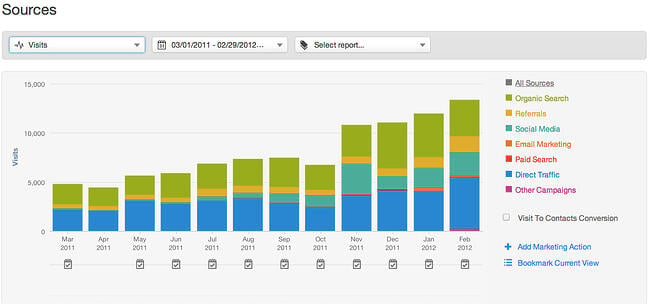
Inbound Leads
The really interesting chart is the contacts or leads page, when the client added landing pages and calls to action to new and compelling content in the form of Ebooks, Whitepapers and Webinars. The purple bars in January indicate the acquisition and use of a targeted email list and successful email campaign to drive attandance at a webinar with several industry luminaries; - content quality matters.
The client went from generating a few dozen leads per month - mostly job inquiries and inbound spam, to generating nearly 2000 leads in the first year.
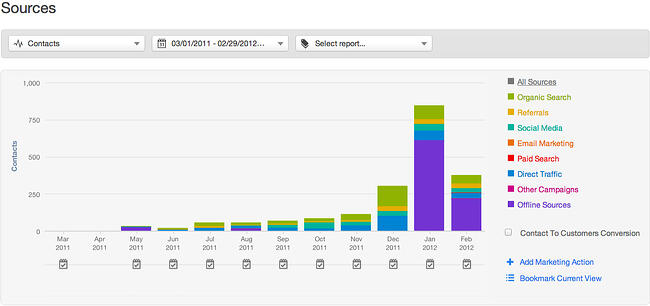
How to Fail at Inbound Marketing
After a strong first year, with an initial set of inbound leads turning into customers, it's hard to imagine anything but upward and onward.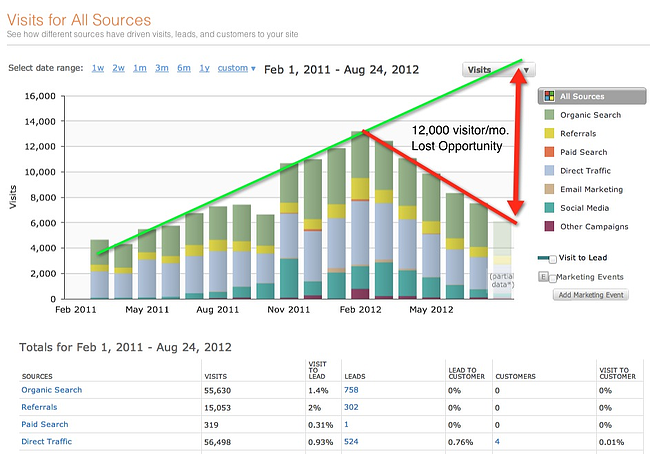
The circumstances that produced this traffic pattern are not unique and maybe you recognize this situation.
- The inbound marketing champion that introduced the HubSpot platform, the methods and process had to fight the CEO and board for funding in the first place.
- The CEO did not fully resource the effort required to fund ongoing activity or a quality lead-nurturing program, (driven by more high quality middle and bottom of the funnel content.)
- The CEO became impatient for sales from the inbound marketing effort, while ignoring the fact that the typical sales cycle time for complex B2B transactions in this market is about 9 months.
- Our champion became disenchanted with the company and the blogging and new content creation stopped in February.
- Our champion left the company in July, although he had checked out months earlier.
Lessons Learned
- Get CEO and Exec team buy-in on program goals, expectations, metrics and committed funding for the first year.
- Set expectations about lead quality.... leads take time to mature through a nurturing process and few will be sales ready on first capture.
- Create a team and a successor in the event team leader departs.
- Create a content generation schedule and stick to it. Content creation in all its forms will be governed by your growth goals. (We recommend 4 blogs a week if you really want to ramp quickly.)
- Get help if you need it, there are many inbound marketing agencies capable of supporting inbound marketing implementations at various stages of maturity.


